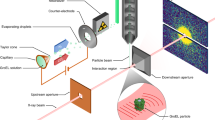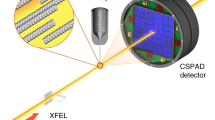Abstract
DEBYE-SCHERRER X-ray powder patterns are conventionally obtained on photographic emulsions in times of the order of hours. When special techniques are used, the time required can be reduced to minutes or perhaps seconds. In this communication, we report the recording of X-ray powder patterns on photographic emulsions in nanosecond time intervals.
This is a preview of subscription content, access via your institution
Access options
Subscribe to this journal
Receive 51 print issues and online access
$199.00 per year
only $3.90 per issue
Buy this article
- Purchase on Springer Link
- Instant access to full article PDF
Prices may be subject to local taxes which are calculated during checkout
Similar content being viewed by others
References
Blumlein, A. D., British Petent No. 589, 127, (June 12 1947).
Fitch, R. A., and Howell, V. T. S., Proc. Inst. Elec. Eng., 3, 849 (1964).
Author information
Authors and Affiliations
Rights and permissions
About this article
Cite this article
JOHNSON, Q., KEELER, R. & LYLE, J. X-ray Diffraction Experiments in Nanosecond Time Intervals. Nature 213, 1114–1115 (1967). https://doi.org/10.1038/2131114a0
Received:
Published:
Issue Date:
DOI: https://doi.org/10.1038/2131114a0
Comments
By submitting a comment you agree to abide by our Terms and Community Guidelines. If you find something abusive or that does not comply with our terms or guidelines please flag it as inappropriate.



